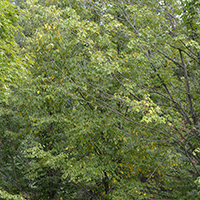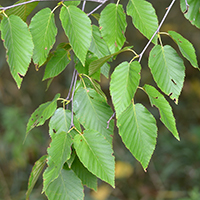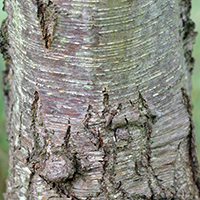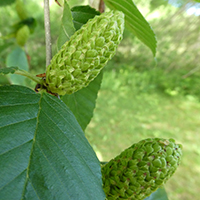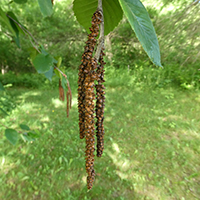What cherry birch looks like
Size and shape
- Reaches 25 metres high.
- Trunk up to 95 centimetres in diameter.
Leaves
- Green leaves are elliptical and finely toothed.
- Turn bright yellow in fall.
Bark
- Dark cherry red to black.
- Becomes grey with age.
- Vertical cracks form with age.
Flowers
- Female flowers are stiff, upright catkins and males are pendulous catkins.
- Flowers are yellow-green and emerge in spring.
Fruit
- Small, winged seeds are found in the catkins.
- Seeds ripen mid-August to mid-September and fall from mid-September to November.
Where cherry birch is found
Cherry birch is a species at risk in Ontario, found only in Southern Ontario near St. Catharines.
Find out what we are doing to protect cherry birch by reading the recovery strategy.
What you need to know to grow cherry birch
- Moisture: grows best in moist, well-drained soils.
- Soil: grows best in rich, slightly acidic soils.
- Shade: grows best in full sun.
Benefits and uses of cherry birch
Wildlife benefits
Cherry birch trees provide shelter for wildlife. Seeds and buds are a food source for birds. In spring, insects such as bees and butterflies visit cherry birch for pollen.
Commercial uses
Cherry birch leaves, twigs and inner bark can be used to produce wintergreen oil. The sap can be used to boil syrup and make birch beer. Cherry birch wood has also been used to make furniture and flooring.
Fun facts about cherry birch
- Cherry birch trees can live for more than 200 years.
- Cherry birch was once used as a cheap substitute for mahogany as the wood darkens and resembles mahogany once exposed to air.
Updated: January 10, 2024
Published: March 07, 2019
